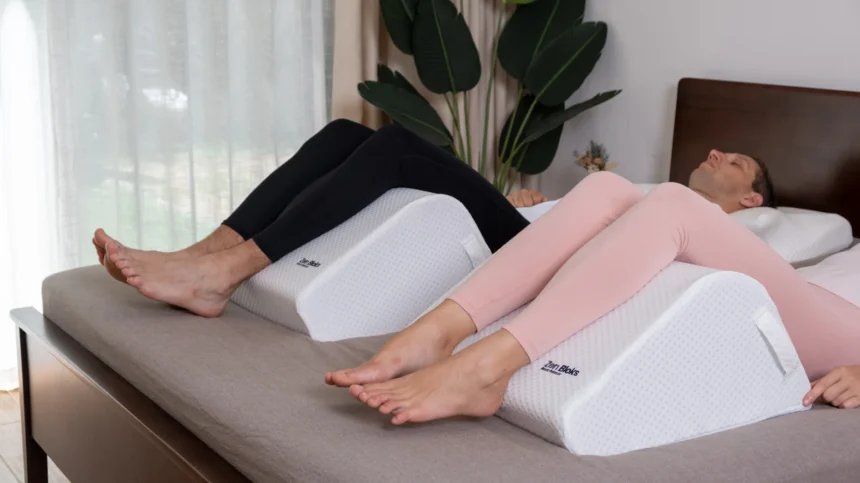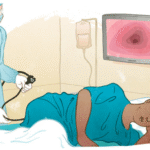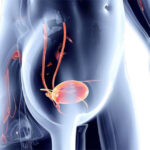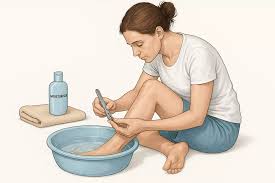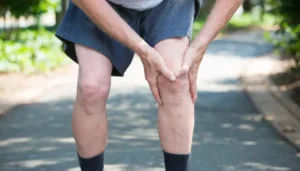Poor circulation in legs may be a sign of underlying health issues and can affect your overall health. When blood flow to the lower extremities is reduced, it leads to symptoms like numbness, tingling, pain, and muscle cramps. Inadequate circulation interferes with the body’s ability to heal and may contribute to more significant health problems. Here’s information on lifestyle changes that support better blood flow:
Compression Socks
One method to assist with circulation is the use of compression garments. Compression socks and stockings apply gentle pressure to your legs, helping to support your veins and improve blood flow back toward the heart. This may help reduce swelling and discomfort in the legs and feet.
For individuals with diabetes, specialized diabetic socks are also available. These socks are designed without tight elastic bands to prevent constriction, helping lower the risk of skin complications. Both compression and diabetic socks can be valuable tools for managing leg and foot health, especially for those who spend a lot of time sitting or standing.
What Causes Poor Circulation?
Circulation is impacted by any issue that hinders the efficient blood flow through the vessels. Proper circulation delivers oxygen and nutrients to the body, meaning poor circulation may result in delayed healing. Health conditions may also cause poor circulation in legs and lower extremities. Chronic illnesses like diabetes, high blood pressure, and heart disease often lead to impaired blood flow, which strains the circulatory system.
What Health Conditions Affect Circulation?
High cholesterol levels can lead to arterial plaque buildup, restricting blood flow and raising the risk of serious issues like heart attacks or strokes. Diabetes can damage blood vessels over time, increasing the risk of poor circulation and associated complications like neuropathy or ulcers. Other conditions that affect circulation are:
- Peripheral Artery Disease (PAD)
- Obesity
- Deep Vein Thrombosis (DVT)
- Raynaud’s Disease
Exercise
Regular physical activity is fundamental for maintaining healthy circulation. Movement encourages blood to flow more efficiently throughout the body, including to the lower legs. Simple, low-impact exercises, like walking, are effective in stimulating blood flow. Aiming for daily walks, even short ones, can make a positive difference.
Other beneficial activities include swimming, cycling, and yoga, which all promote cardiovascular health without putting excessive strain on your joints. Besides formal exercise, incorporating more movement into your daily routine is beneficial. If you have a sedentary job, take breaks to stand up, stretch, and walk around. Another simple technique is leg elevation. Propping your legs up above heart level for 15-20 minutes a few times a day can use gravity to assist blood in flowing from your legs back to your heart, which may help reduce swelling.
Diet
Focus on consuming foods rich in omega-3 fatty acids, like salmon and flaxseeds, which are known to support cardiovascular function. Adopting a diet that supports heart health also has a positive effect on blood flow. Addressing health conditions through proper medical care, lifestyle adjustments, and early intervention can help people improve their blood flow.
Including plenty of fruits and vegetables in your meals provides antioxidants and nitrates, which can help improve blood vessel health. Foods high in fiber, like oats and legumes, are also beneficial. Staying well-hydrated by drinking enough water throughout the day is another fundamental component of maintaining healthy blood circulation.
If you smoke, quitting is a very impactful way to support your circulatory health. Smoking damages blood vessels, which can severely impede circulation. Limiting alcohol consumption is also recommended. In some cases, a healthcare provider may suggest medication to help comprehensively manage conditions that affect circulation.
Learn To Improve Poor Circulation in Legs
By incorporating practices like wearing compression socks, engaging in regular exercise, and adopting a supportive diet, you can take proactive steps toward better circulatory health. Improving circulation in your legs involves making consistent habits and mindful lifestyle choices. If you have concerns about circulation, contact a healthcare provider for guidance today.


